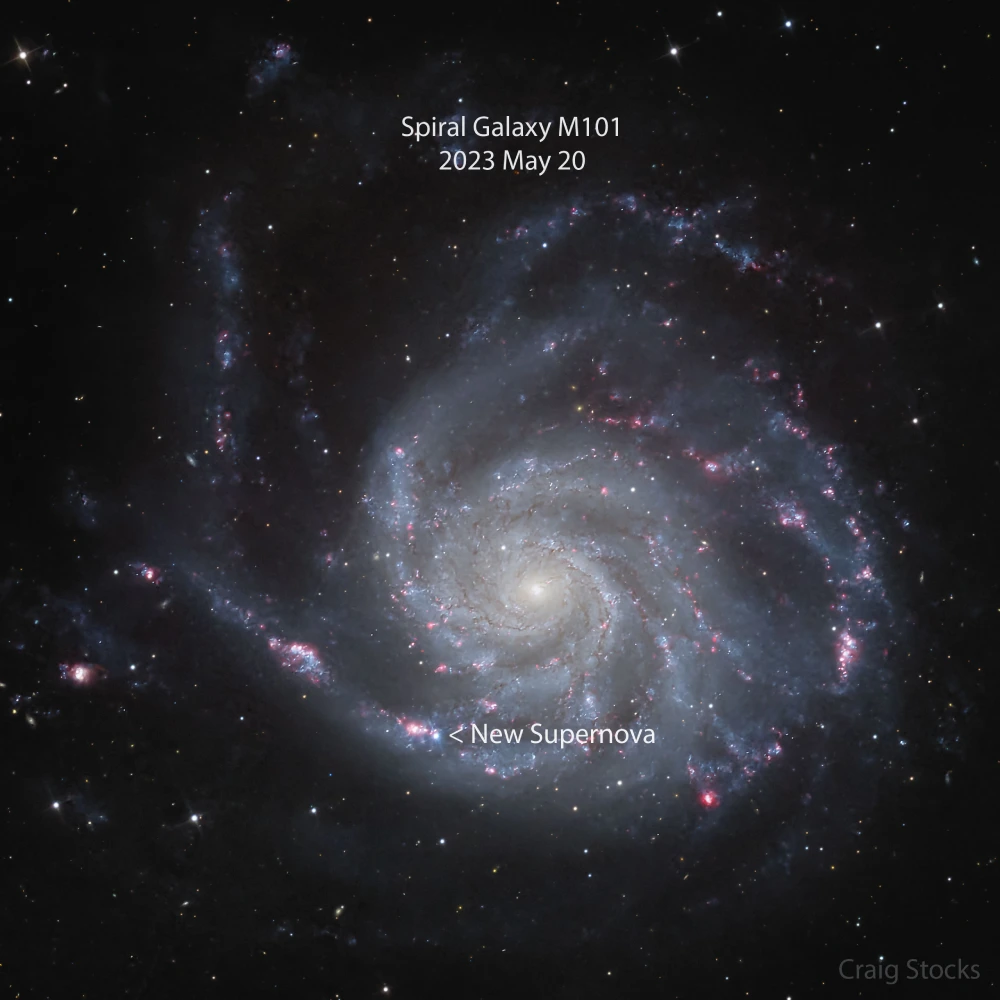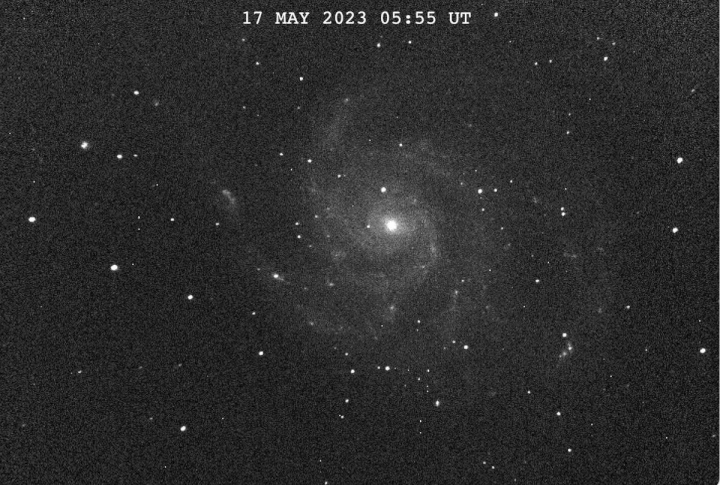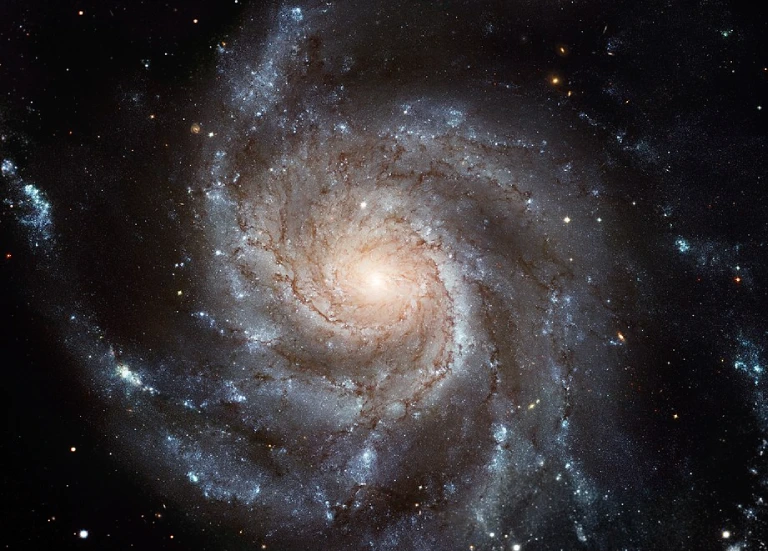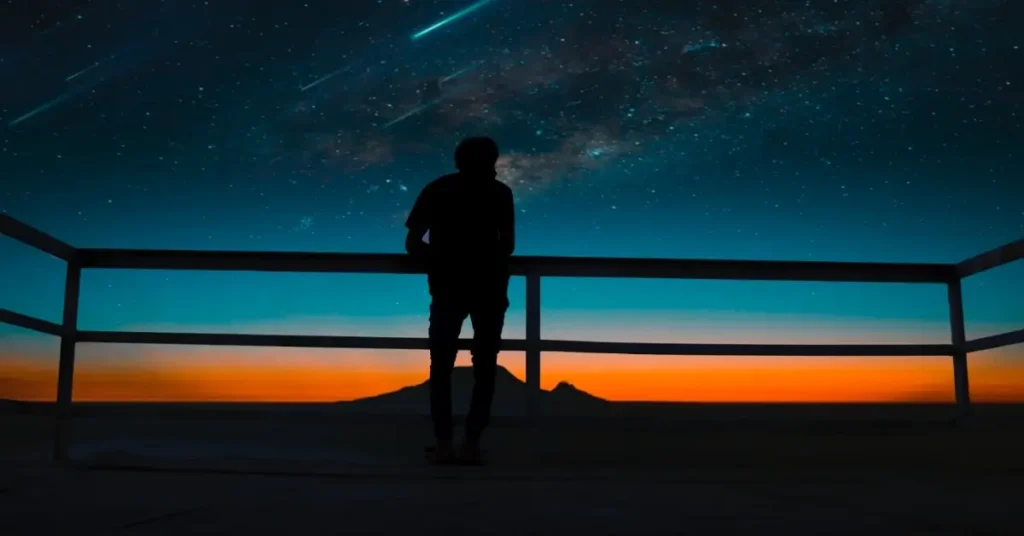|
Getting your Trinity Audio player ready...
|
Supernovae are caused by the death of massive stars. When a massive star runs out of fuel, it collapses under its own gravity and explodes. The explosion can be incredibly bright, outshining an entire galaxy. Supernovae are important because they can help us to understand how stars evolve and die. They can also be used to measure the distance to distant galaxies. The brightest and closest supernovae may be visible with the naked eye, but even those in distant galaxies can be easily spotted with amateur equipment from your backyard. And now, just such an opportunity has appeared: A supernova just went off in the nearby spiral galaxy M101 (NGC 5457) and you can find it tonight in the sky.
According to NASA, the new supernova, called SN 2023ixf, was first spotted by Koichi Itagaki on May 19. Itagaki discovered the supernova when it was magnitude 14.9, though it quickly brightened over the weekend. After the blast had been identified, astronomers went back through data from the Zwicky Transient Facility and found the first evidence of the supernova two days before that.


Now that it’s appeared, SN 2023ixf is expected to remain visible in a telescope for months, offering an amazing and unique target for your telescope all summer long.
How to find M101 and its supernova
Those of us in the Northern Hemisphere are extra-lucky: M101 is located in the circumpolar constellation Ursa Major, meaning it’s always above the horizon. No matter when your observing session starts, it will be up in the sky for you to find, and you can also start looking for it as soon as darkness falls.
M101 lies in Ursa Major near the last two stars in the Big Dipper’s handle.

The galaxy sits near the end of the Big Dipper’s handle, forming the apex of a triangle with the last two stars in the handle, magnitude 2.2 Mizar and magnitude 1.9 Alkaid, as the base. M101 is often called the Pinwheel Galaxy because its face-on nature shows off its stunning spiral arms.

M101 sits just over 20 million light-years away. That’s pretty close, by cosmic standards, which means its supernova should be easy to spot. If you have a go-to scope, you can dial in the supernova’s exact coordinates if you like.
But while you’ll need a good-sized scope to pull out a lot of detail in the galaxy itself, the supernova is so bright — last reported as magnitude 11 on the 23rd — that you’ll see the bright “star” even in a small (4-inch or so) scope!
An exciting find
Although it’s millions of light-years away, SN 2023ixf is the closest supernova that’s occurred within the past five years. Because it’s so close — and so young — astronomers will be eagerly following its evolution. Studying such events, specifically classified as type II supernovae (to differentiate them from their white dwarf, type Ia brethren), gives us a window into how massive stars die and what becomes of them afterward.
Regardless of the scientific discoveries yet to come, for now, SN 2023ixf presents the perfect springtime target for your backyard telescope tonight!


